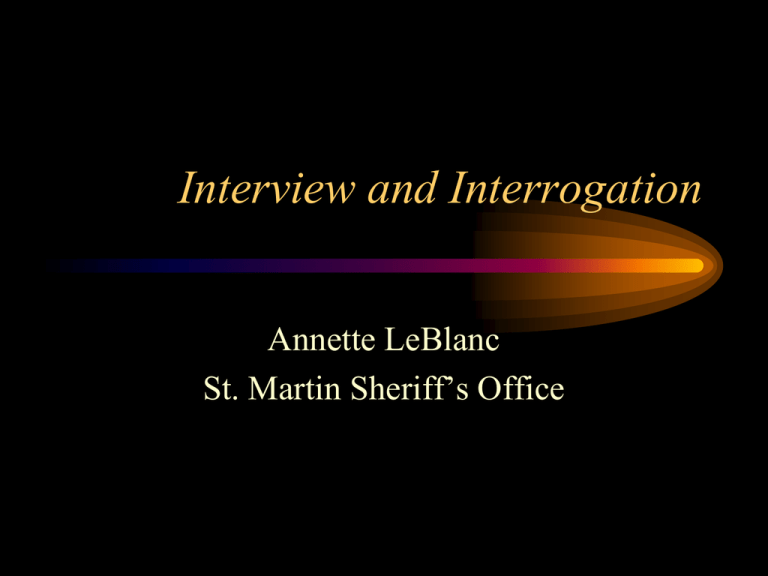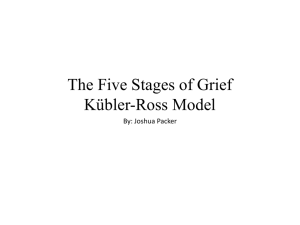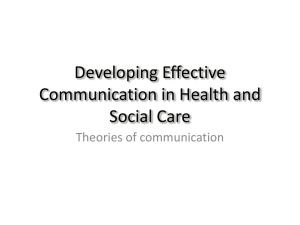Interview and Interrogation
advertisement

Interview and Interrogation Annette LeBlanc St. Martin Sheriff’s Office Definitions: • Interview – Non-Accusatory meeting in which information is obtained – Purpose: to gather information – Subjects: witnesses, victims • Interrogation – Formal solicitation of information – Purpose: obtain the information you believe this person has – Subject: suspect The Interview: Introduction Body Conclusion Structure of the interview • • • • • • Preparation: Facts and Location Introduction Rapport: often extension of the introduction Questions: open ended vs. closed Verification: Ensures mutual understanding Catch-all Questions (Positive: What have I forgotten to ask (Aggressive: What have you not told me • Departure: Leave open possibility for re-contact • Critique : Only way to learn Factors to consider: Timing: Interview / Interrogation Location: Interview / Interrogation Communication is both verbal and non-verbal. Are the words and actions giving the same signal? Verbal Clues Pitch Volume Rate Actual words and phrases Always get a base to gauge by Five Stress Response States: Anger Depression Bargaining Denial Acceptance/acknowledgement Verbal • Anger: – Focused: Most easily recognizable • Interviewer/Department • Victim • Witness – Covert: More subtle • Facts of the case will be attacked • Intimidation (I have a degree in accounting) • Make and issue out of an non-issue or minor details Verbal • Depression: – Anger and depression are closely related. One is focused outward, depression is anger focused inward. – Look for body language: closely resembles body language of confession: • Body is slumped, drooping shoulders, chin in the chest, crying … Verbal • Bargaining: – Complaining for sympathy – Gray Statements Verbal • Denial: 90% of the subject’s deceptive behavior will present itself to the investigative interviewer in the form of denial. If anger , depression and bargaining fail- turn to denial. – – – – – – Memory Lapses Modifiers/Qualifier Guilt Phrases Vocabulary Shifting Specific Denials Denial Flag expressions Verbal Acceptance - Buy out statements - Fantasy-reality statements - Punishment statements Body Language • Posture: – Leaning forward – Sitting Sideways •Gestures: –Head movement –Hand activity •Facial expression: –Expression of fear –Anger –Acknowledgement •Eye movements: –Different for different cultures: what you’re looking for is a break in the “normal” baseline. Review: Verbal signs: Truthful person - makes general sweeping denials, offers unqualified direct spontaneous answers - exhibits a reasonable memory - responds to questions rationally and in a distinct and clear tone Non verbal signs: Truthful person - sits upright but not rigid - positions himself in front of the questioner and leans toward him/her when making a point - appears relaxed and casual Review: Verbal signs: Deceptive Person: - Offers very specific denials - gives delayed, evasive or vague answers - exhibits an unusually poor, selective or remarkable memory -Qualifies answers or uses religion or oaths to support their statements - Speaks in an irrational, mumbled or subdued manner using fragmented statements Review: Nonverbal Sings: Deceptive Person - Slouched or leans backward (away from interviewer) - very rigid and stiff -Pulls their elbows in close to the body, arms folded and locked in front of them -Exhibits rapid and erratic posture changes The Interviewer • A successful Interviewer has the ability to obtain information from all subjects, analyze the information and record it accurately. • The interviewee should be allowed to tell his own story in his own words without Interruption. Experience has shown that in this narrative, the interviewee tells all that he or she knows in words of their own choosing. They are more inclined to furnish more accurate information than if they merely furnish answers to specific questions. Advantages • It gives the interviewee the opportunity to talk freely • It places a certain amount of pressure on them to keep talking • Their thinking is self-directed • It aids their memory-more things come to mind • It makes it easier for them to recall and relate events in the order in which they occurred • It makes it easier to extract the important parts of the story • It furnishes “ammunition” for direct questioning THANKS AND HAVE A GREAT DAY










